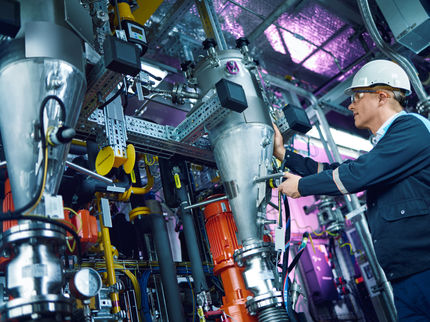Going back to nature
A look at processing systems for white biotech applications
The concept of ‘White Biotech’ is nothing new. People have been using natural products to create health-giving products for millennia. However in the first half of the 20th century organic chemistry developed ways to create many of these products artificially: some using oil, a diminishing resource; many more using other chemicals and highly polluting, energy consuming processes. As we have all become increasingly aware of the limitations of the world’s oil reserves, and the need to protect the environment, so biotechnology has taken over.
White biotech is the name given to that particular branch of biotechnology that is concerned with industrial processes. It uses living cells - from yeast, moulds, bacteria and plants - and enzymes to synthesize products that are easily degradable, require less energy and create less waste during their production.
The equipment used for white biotech processing all fall within the scope of supply of the GEA Group – fermenters, separators, evaporators, freeze- and spray-dryers, etc. – but, according to Thorsten Vammen, Director at GEA Liquid Processing in Skanderborg, Denmark, it’s not only the equipment that’s the key to success. “It’s important to have the right equipment of course, but it’s the way in which they are put together that really matters,” he explained.
There are three key drivers that fuel industrial biotech: the need to reduce reliance on fossil fuels; the need to maximise plant efficiency and profit; and the desire of the buying public to put only ‘natural’ products in and on their bodies. In this sense industrial biotech ticks all the boxes. But, although it is a rapidly growing market, it’s also a very competitive one. To succeed, biotech companies need to be at least one step ahead of the game.
Planning for success
For GEA Liquid Processing the opportunity is to build equipment that is complementary, that is designed to work well together, then combine the experience and industry understanding of its engineers to project manage the building of installations for maximum efficiency, both in development and operation.
For example, the plant needs to have all its component parts put together in a smart way to eliminate contamination, avoid dead ends and air pockets, make it easy to clean and ensure that the plant works in harmony. Some of the cells used in biotech processing are very sensitive to contamination from the outside and from the last batch; carrying cells from one to another can be disastrous. Designing the plant in the right way helps prevent these expensive mistakes.
Similarly, time saved during design, installation and commissioning, through a fundamental understanding of how the equipment works as a system, is immediately reflected in reduced costs and helps produce better products of greater consistency, and bring them to market faster.
A few weeks delay in start-up for a new factory will cost much more than any additional expenses paid up-front for professional project management. With this in mind GEA Liquid Processing also offers its Fast Track implementation process. This sees the plant and the building being built on separate parallel tracks right from the start of the project. Over several projects GEA Liquid Processing has proved it possible to reduce the execution time by up to eight months, meaning products get to market earlier and eight months more production up front. This provides a dramatic improvement on a project’s Return on Investment.
The environmental gain
Building a plant that is efficient and minimises the effect on the environment can save money, long term. The initial investment might be a little higher but the total cost of ownership will be lower, more than compensating for the additional up-front expenditure. Less use of power reduces fuel bills, avoids penalties for unacceptable emissions and saves resources. Efficient use of chemicals and the clever use of water – including closed circuit systems - minimises disposal costs. Good cleaning means less down time and can reduce the need to use preservatives. Heat recovery systems save money and help the environment too so they make good commercial sense.
There can be little doubt that, as the world continues to find ways of reducing its reliance on oil and chemical processing, biotech processing will continue its upward trend. Those who stand to take the greatest rewards from this revolution are likely to be those who exploit this natural phenomenon most efficiently.






















































